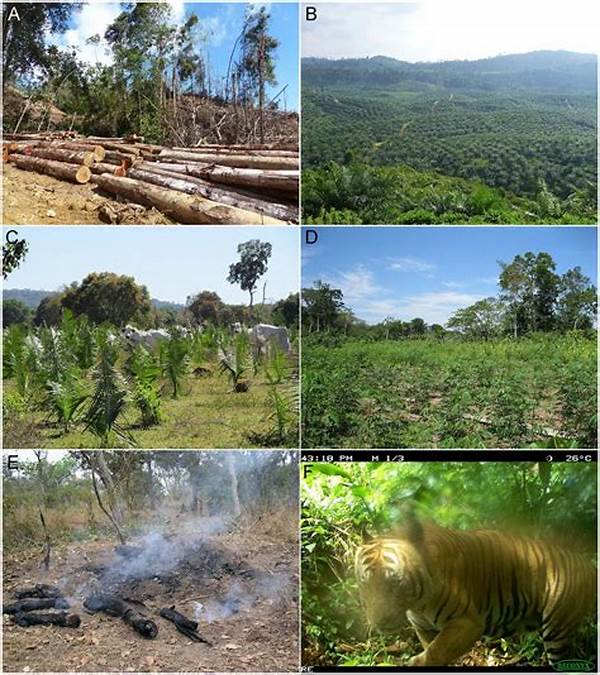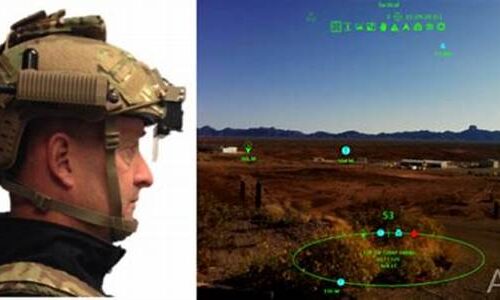The Nexus Between Conflict and Biodiversity Loss
The impact of conflicts on biodiversity is profound and multifaceted, affecting ecosystems worldwide in complex ways. Armed conflicts often lead to habitat destruction, as the machinery of war, such as tanks and heavy artillery, can physically alter landscapes. Additionally, the need for resources can result in deforestation and exploitation of wildlife, pushing many species towards extinction. The chaos of war zones can render conservation efforts ineffectual, dismantling the structures that protect biodiversity. Wildlife may also be directly impacted as they are caught in crossfires or fall victim to poaching and illegal trade. As conflicts disrupt human societies, the resulting displacement can heighten pressures on natural resources in areas of refuge.
Furthermore, conflicts can destabilize governments, leading to inadequately enforced environmental laws and regulations. This breakdown in governance can exacerbate the impact of conflicts on biodiversity, as unregulated extraction and land use transform habitats irrevocably. Consequently, conflict regions often remain underfunded and under-researched in terms of conservation, leaving many ecological wounds unaddressed. The international community must prioritize the inclusion of environmental considerations in peace-building and conflict resolution processes. This prioritization is crucial in mitigating the long-standing impact of conflicts on biodiversity and rehabilitating affected ecosystems.
In addition, strategic environmental assessments and peace-building initiatives must take into account the resilience of ecosystems. Efforts should focus on restoring ecosystem services that are vital not only for biodiversity conservation but also for human well-being. Promoting sustainable development approaches that recognize the intricate links between human communities and natural habitats can foster rehabilitation. Addressing the impact of conflicts on biodiversity requires concerted global action, emphasizing collaboration between conservation scientists, policymakers, and local communities. Protecting biodiversity amidst conflict is not just a moral imperative but a necessary step towards achieving global sustainability goals.
The Challenges in Addressing Environmental Damage from Conflicts
1. The impact of conflicts on biodiversity includes habitat destruction, as warfare physically alters ecosystems, often irreversibly damaging flora and fauna.
2. Conflicts exacerbate illegal wildlife trade, directly impacting biodiversity by driving vulnerable species towards extinction.
3. Weak governance during conflicts can lead to poor enforcement of conservation laws, increasing the impact of conflicts on biodiversity.
4. Human displacement due to conflicts heightens resource pressure in refuge areas, which can negatively affect biodiversity.
5. Conservation efforts are frequently hampered in conflict zones, as the impact of conflicts on biodiversity is compounded by the lack of infrastructure.
Strategies for Mitigating Biodiversity Loss in Conflict Zones
The recognition of the impact of conflicts on biodiversity calls for strategic intervention measures that integrate conservation into peace-building processes. One approach is to establish transboundary conservation areas that can serve as safe havens for wildlife, even amidst political instability. These protected areas need to be managed by international bodies to ensure neutrality and effectiveness, irrespective of national conflicts. Another crucial strategy is empowering local communities through education and economic opportunities that promote biodiversity-friendly practices. Strengthening local stewardship can enhance resilience and adaptive capacity, enabling communities to better protect their ecosystems in times of conflict.
Moreover, international diplomatic ventures should incorporate environmental clauses in ceasefires and peace treaties. Acknowledging the vital role of ecosystems in maintaining post-conflict stability can strengthen commitments to biodiversity protection. Funding mechanisms to support conservation efforts in conflict zones must be innovative and adaptable, fostering partnerships between international organizations, governments, and non-profits. Technology can also play a pivotal role in monitoring and managing biodiversity in conflict-affected regions, with satellite imagery and remote sensing offering non-intrusive ways to assess environmental health. By adopting these multifaceted strategies, the global community can address the insidious impact of conflicts on biodiversity effectively.
Comprehensive Understanding of Conflict-Driven Biodiversity Challenges
The impact of conflicts on biodiversity manifests in disparate ecological phenomena that require comprehensive understanding. Governmental collapse in conflict zones often precipitates a vacuum in environmental regulation, exacerbating over-exploitation of natural resources. The absence of rule of law fuels illegal extraction and poaching, disrupting ecological balances. Humanitarian crises emerging from conflicts lead to mass migrations, which subsequently pressure surrounding ecosystems. Refugee influxes often result in increased natural resource demands, including food, water, and firewood, intensifying the impact of conflicts on biodiversity.
Furthermore, lack of funding for research in conflict zones creates knowledge gaps, obscuring the true extent of biodiversity loss. The destruction of research stations and conservation facilities decelerates scientific investigations, leading to unaddressed ecological degradation. Conflict resolutions rarely prioritize ecological restoration, sidelining pivotal environmental recovery. Establishing frameworks that integrate environmental recovery into post-conflict rebuilding could mitigate long-term ecological damage. Comprehensive assessments and targeted interventions can provide a sustainable pathway for rejuvenating biodiversity, thus contributing to security and stability in conflict-recovering regions.
Initiatives and Policies for Biodiversity Restoration
Addressing the impact of conflicts on biodiversity necessitates implementing targeted initiatives and policies that focus on restoration. Creating peace parks along borders affected by conflicts can serve as biodiversity conservation hotspots. These parks encourage cooperation and shared management among conflicting nations, ensuring protection and sustainable use. Integrating biodiversity considerations into military strategies can prevent unnecessary habitat destruction, preserving essential ecosystems from degradation. Rehabilitation programs that involve local communities can aid in the restoration of degraded lands, promoting participatory conservation.
Encouraging international policies focused on conflict-sensitive conservation can heighten the importance of biodiversity in peace-building processes. Policymakers must advocate for strategic environmental assessments before initiating development projects in conflict-sensitive areas. Raising awareness of the interconnectedness between peace and conservation can bolster international support for conservation in conflict zones. Furthermore, fostering research collaborations can enhance understanding of ecosystem dynamics amidst conflict, promoting evidence-based policy-making. Such initiatives, tailored towards ameliorating the impact of conflicts on biodiversity, can pave the way for sustainable ecological restoration.
Role of International Organizations in Biodiversity Conservation
International organizations play a crucial role in mitigating the impact of conflicts on biodiversity, providing the necessary resources and frameworks for conservation. Entities such as the United Nations Environment Programme and the International Union for Conservation of Nature can facilitate coalitions that focus on safeguarding biodiversity. Collaboration with local governments in conflict-affected regions can foster resilience by enhancing local capacities in biodiversity management. Developing standardized protocols for conservation in conflict zones can ensure a consistent and coherent approach across regions.
Moreover, international organizations can aid in data collection and dissemination, addressing the knowledge gaps induced by prolonged conflicts. They can also assist in developing frameworks for assessing the ecological impacts of military actions, providing a basis for reparative measures. Encouraging dialogue and partnerships between conservationists and military stakeholders can proactively address potential biodiversity threats. By reinforcing the global commitment to biodiversity conservation, international organizations can substantially mitigate the impact of conflicts on biodiversity, promoting sustainable and peaceful coexistence with nature.
Summary of the Impact of Conflicts on Biodiversity
In conclusion, the impact of conflicts on biodiversity is a critical challenge that requires urgent and comprehensive action. Conflicts result in significant ecological damage through habitat destruction, increased wildlife trade, and weakened environmental governance. These adverse effects are compounded by human displacement and insufficient conservation efforts, often leaving biodiversity in conflict zones deeply compromised. An effective response demands integration of conservation in peace-building processes and strategic resource management. Addressing this issue necessitates global cooperation, where international organizations, governments, and local communities play interlinked roles in biodiversity protection.
Moreover, ecological considerations should become intrinsic to conflict resolution and governance, ensuring sustainable development even amid geopolitical unrest. Understanding the multifaceted impact of conflicts on biodiversity is crucial for developing adaptive management strategies. Comprehensive measures rooted in scientific research, local community participation, and international collaboration stand poised to address the myriad challenges posed by conflicts on biodiversity. As nations work together to mitigate these impacts, the collective aim should focus on establishing long-term resilience, ensuring that biodiversity thrives alongside human societies.





